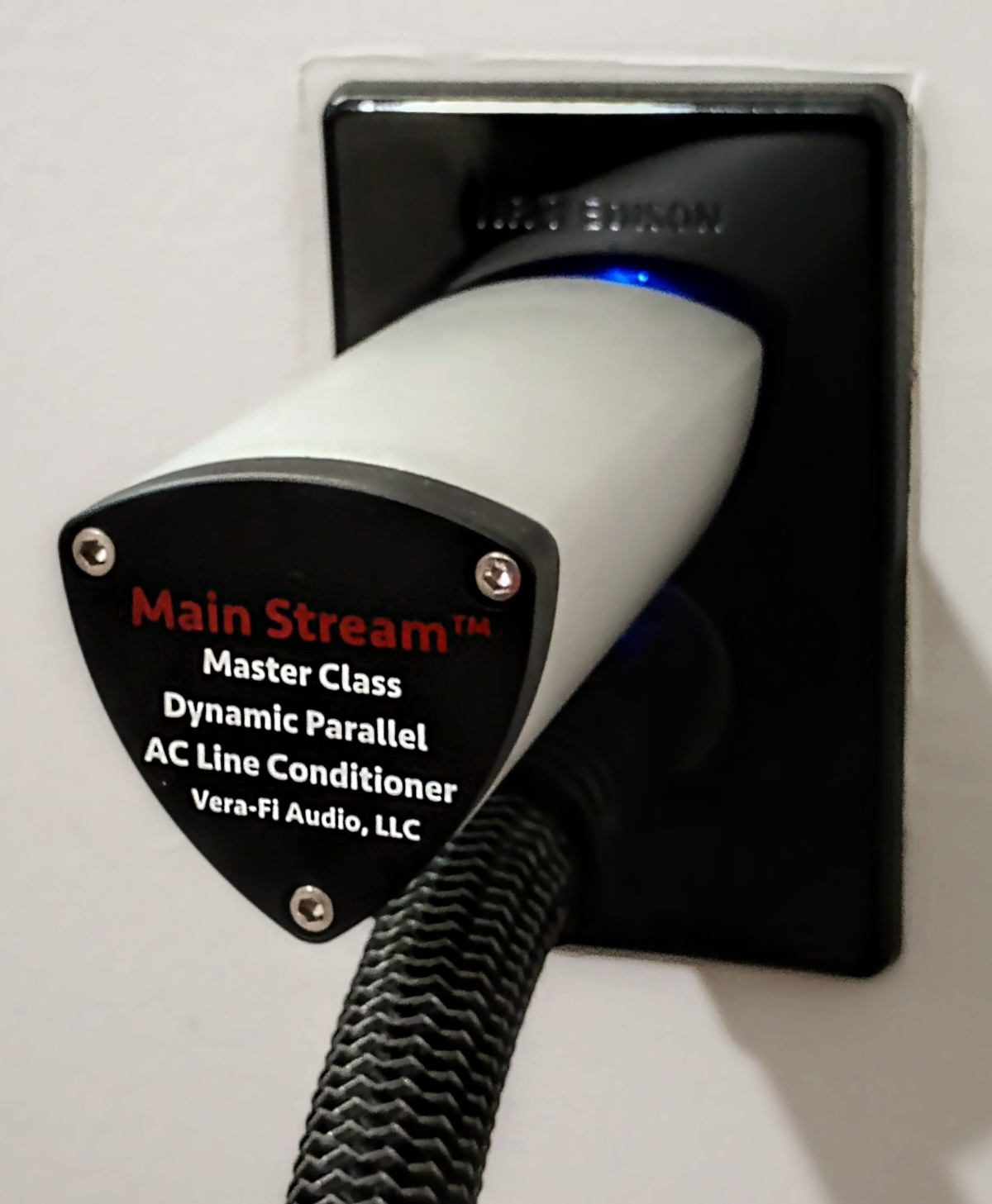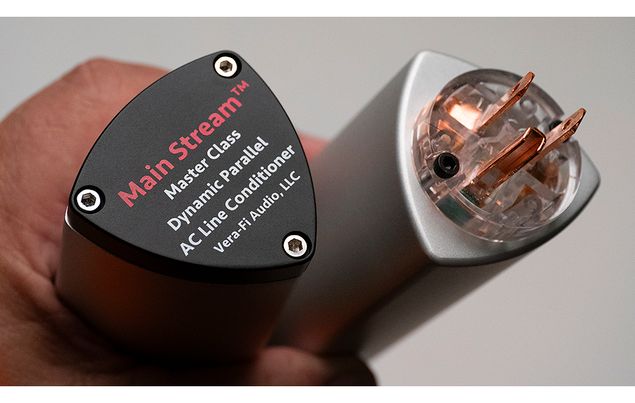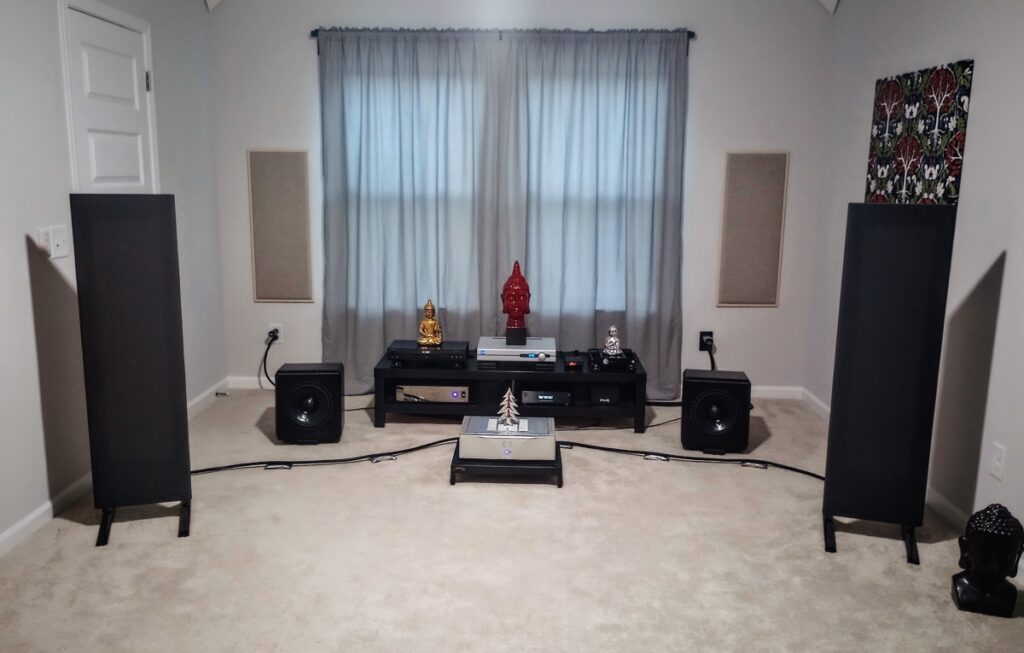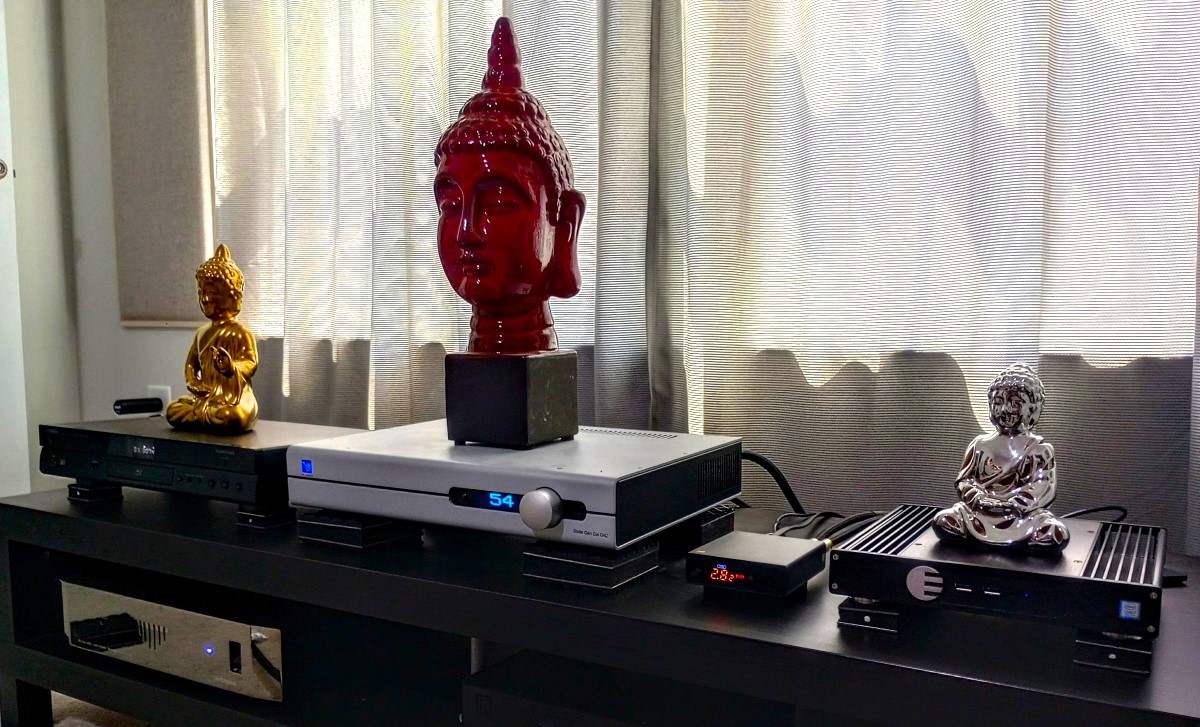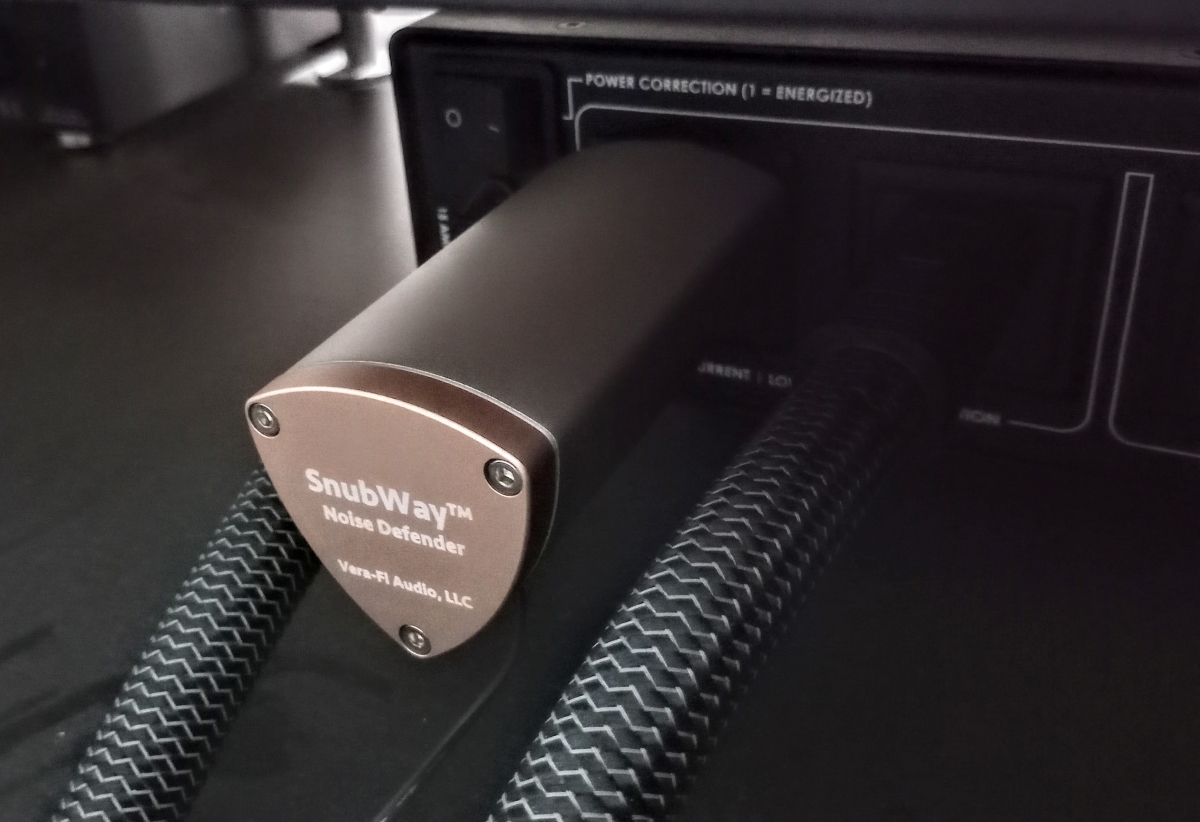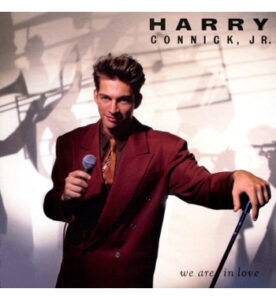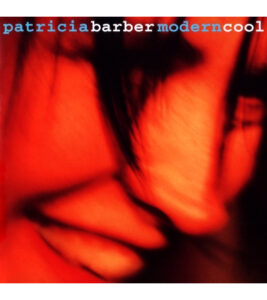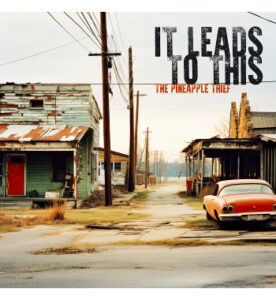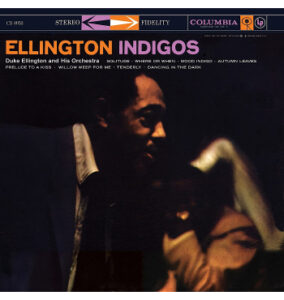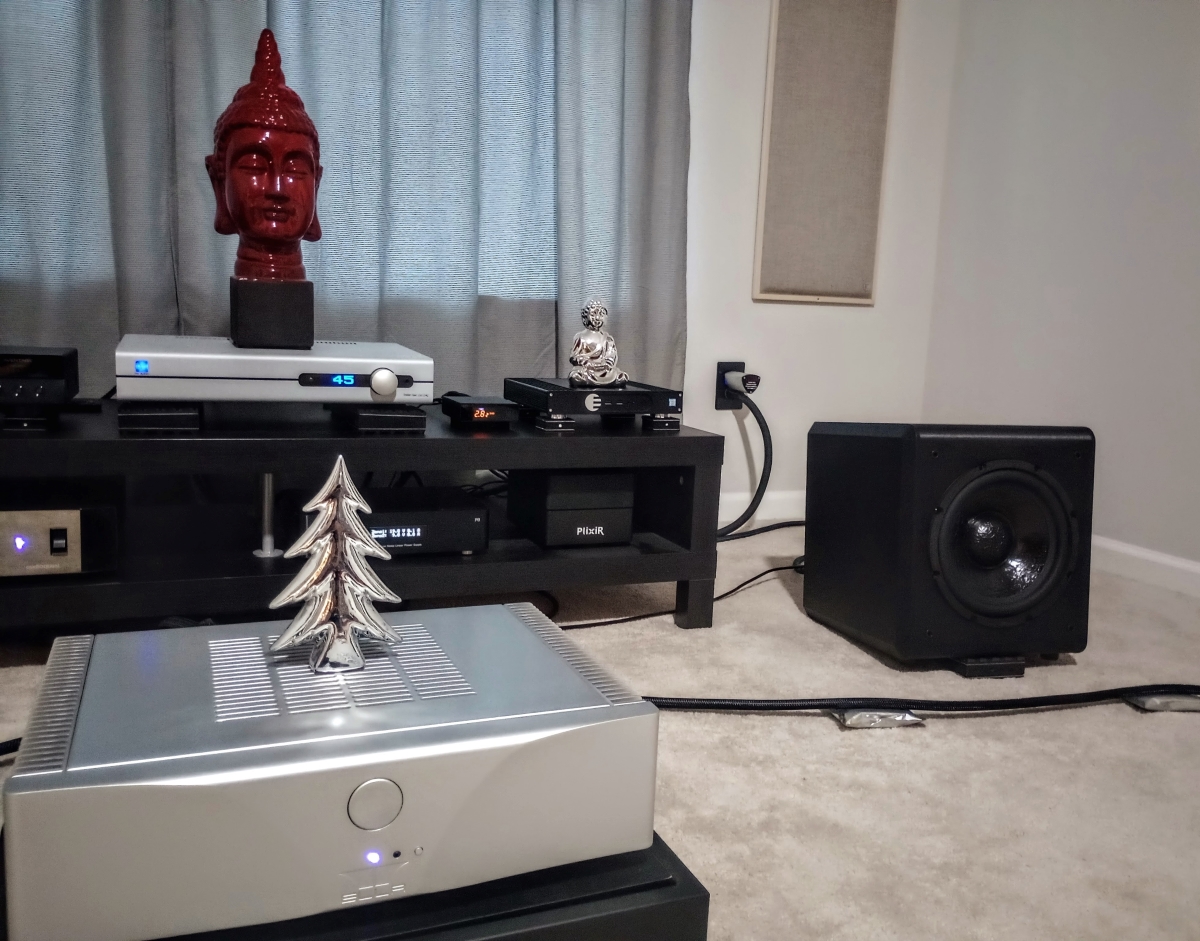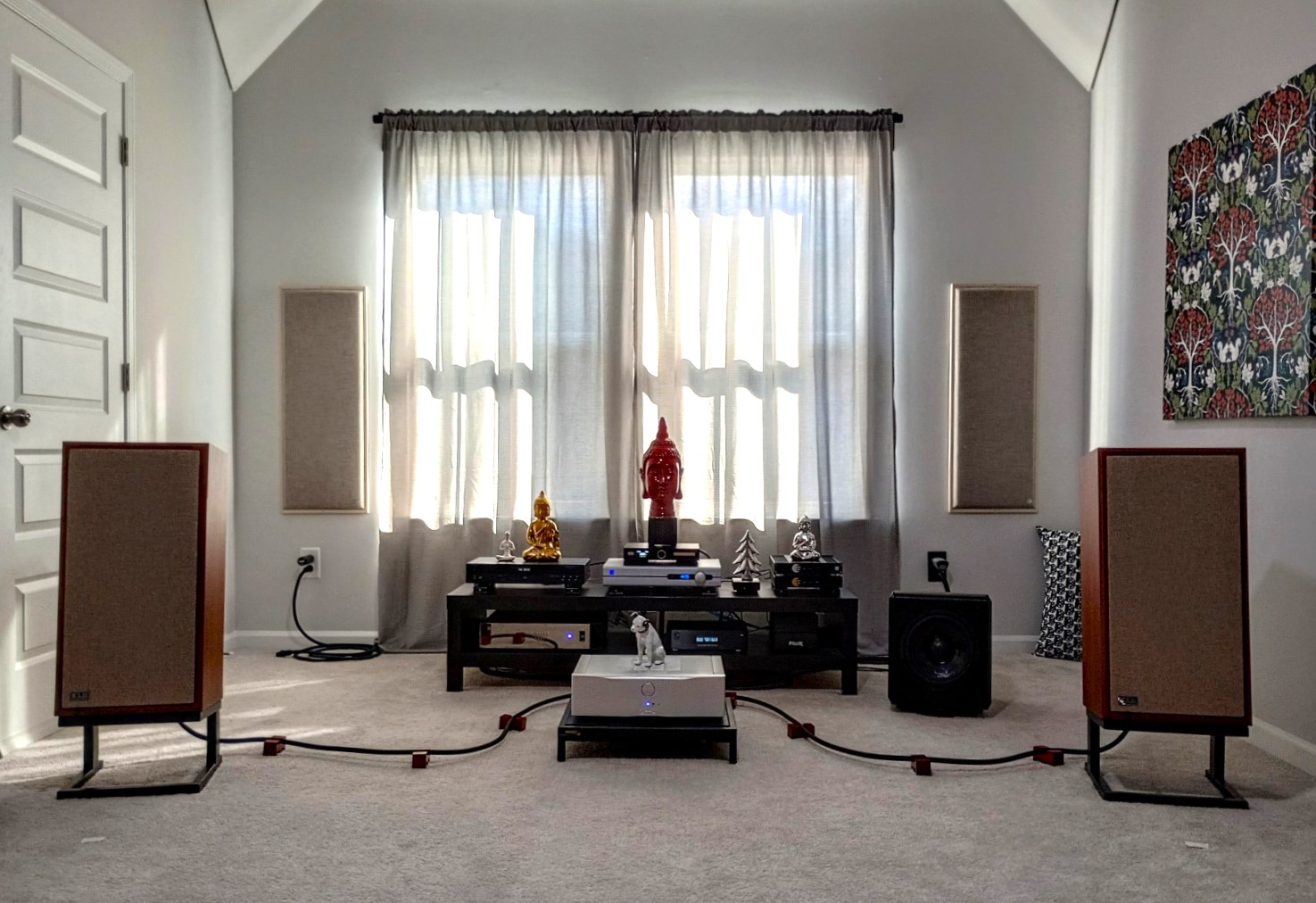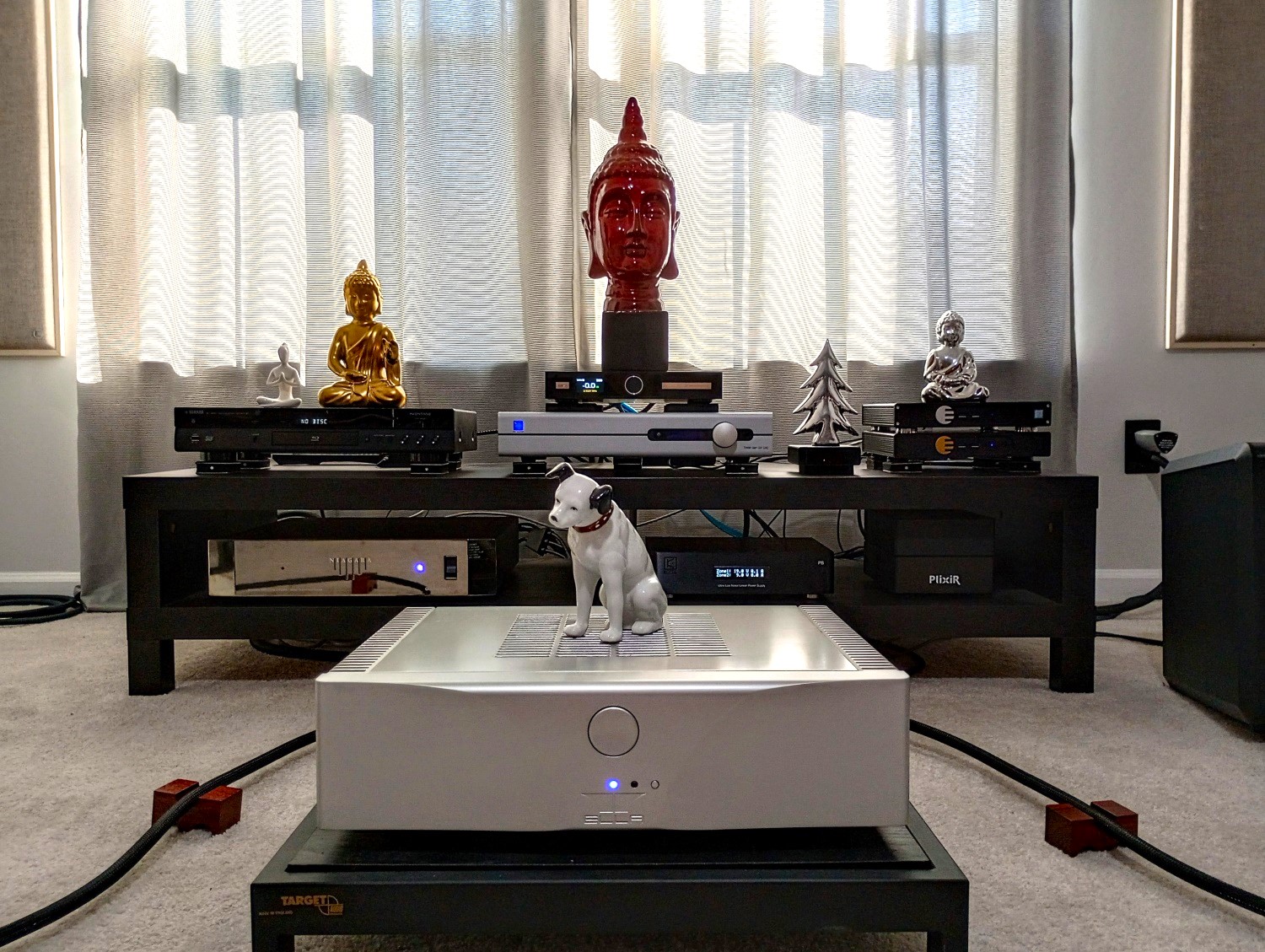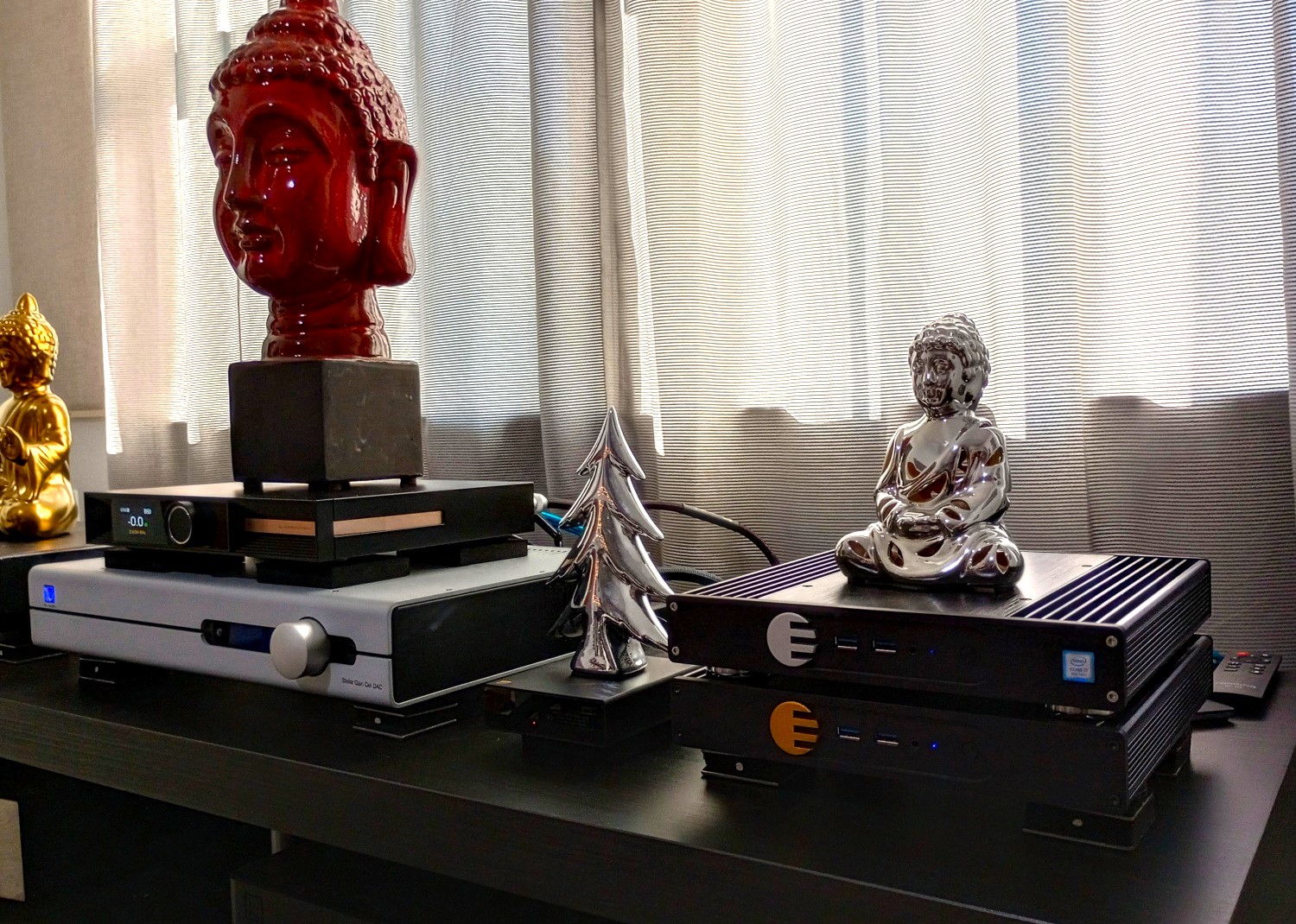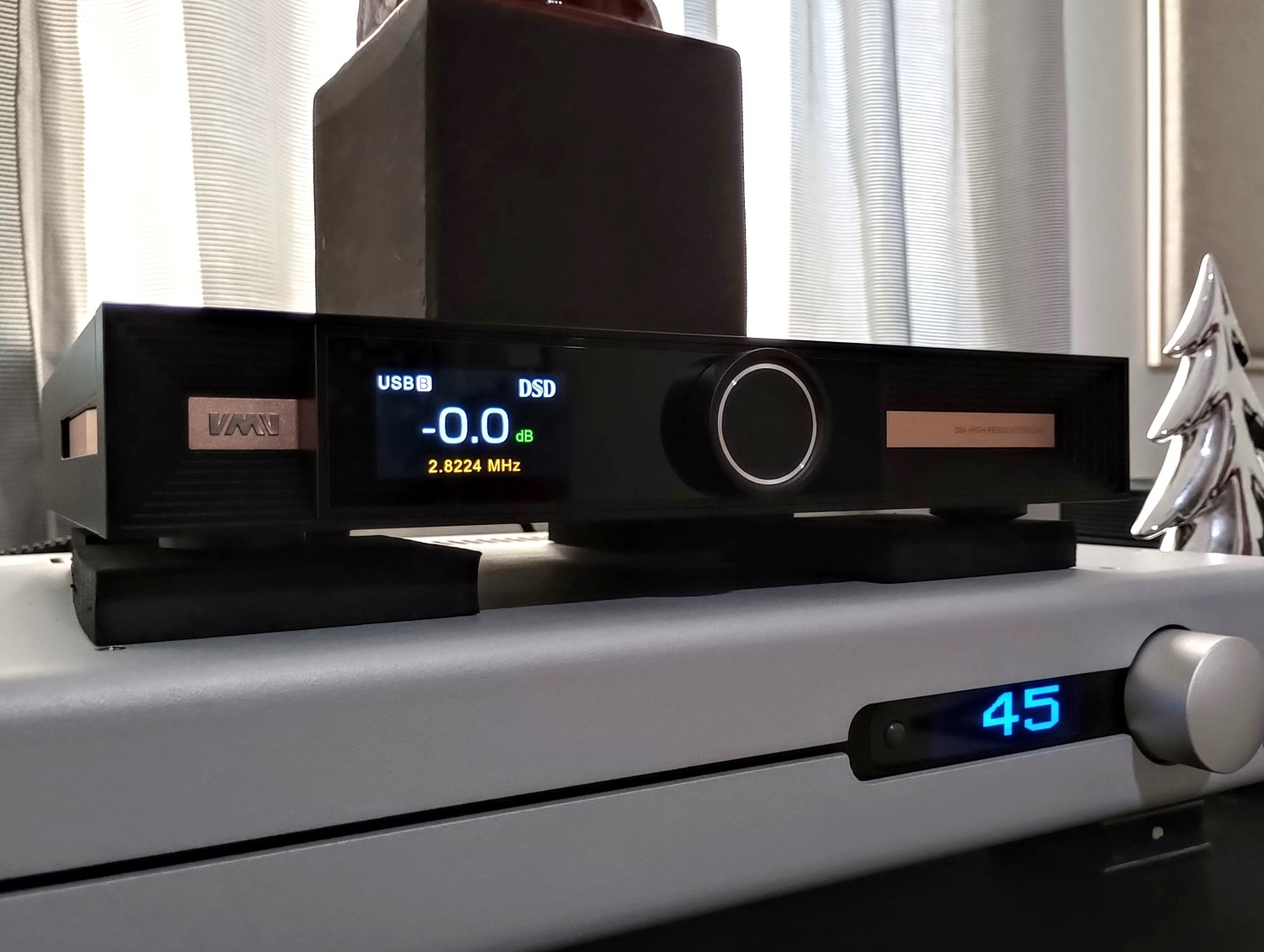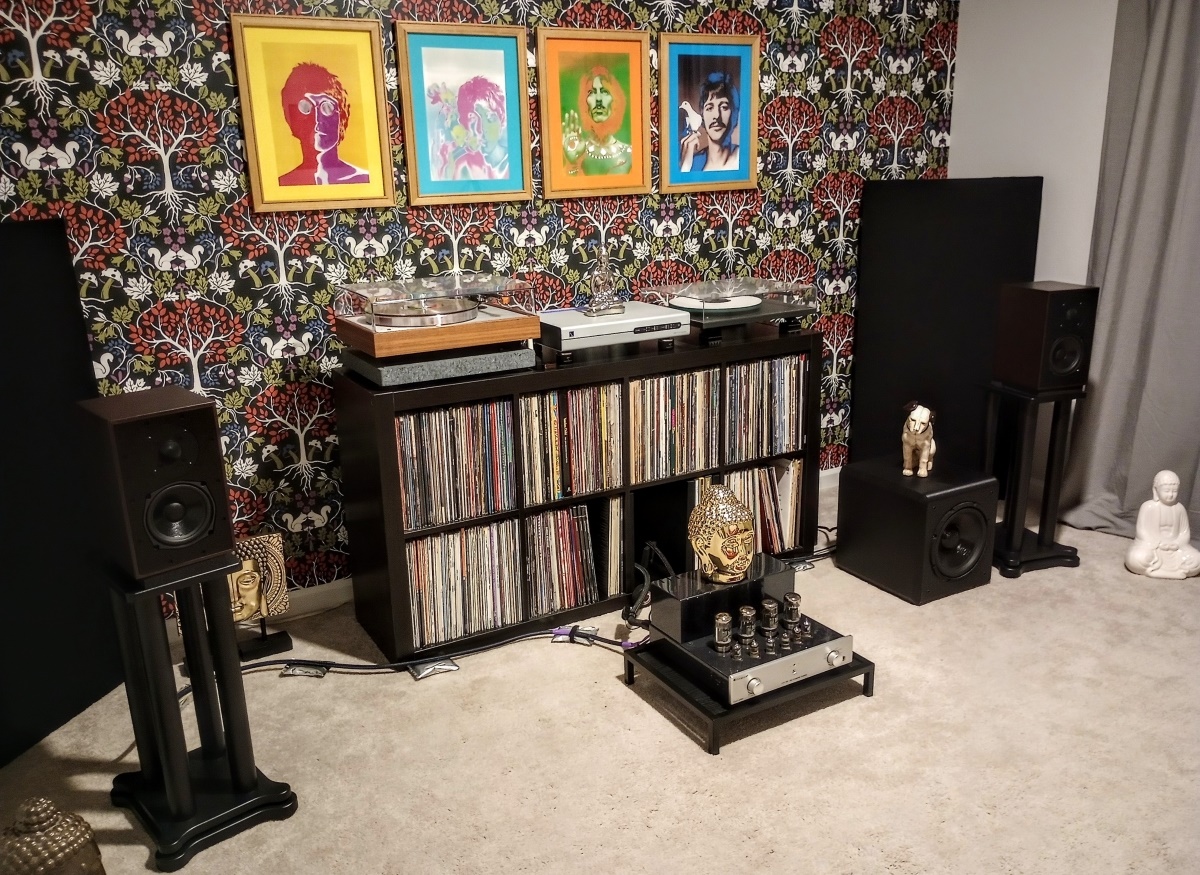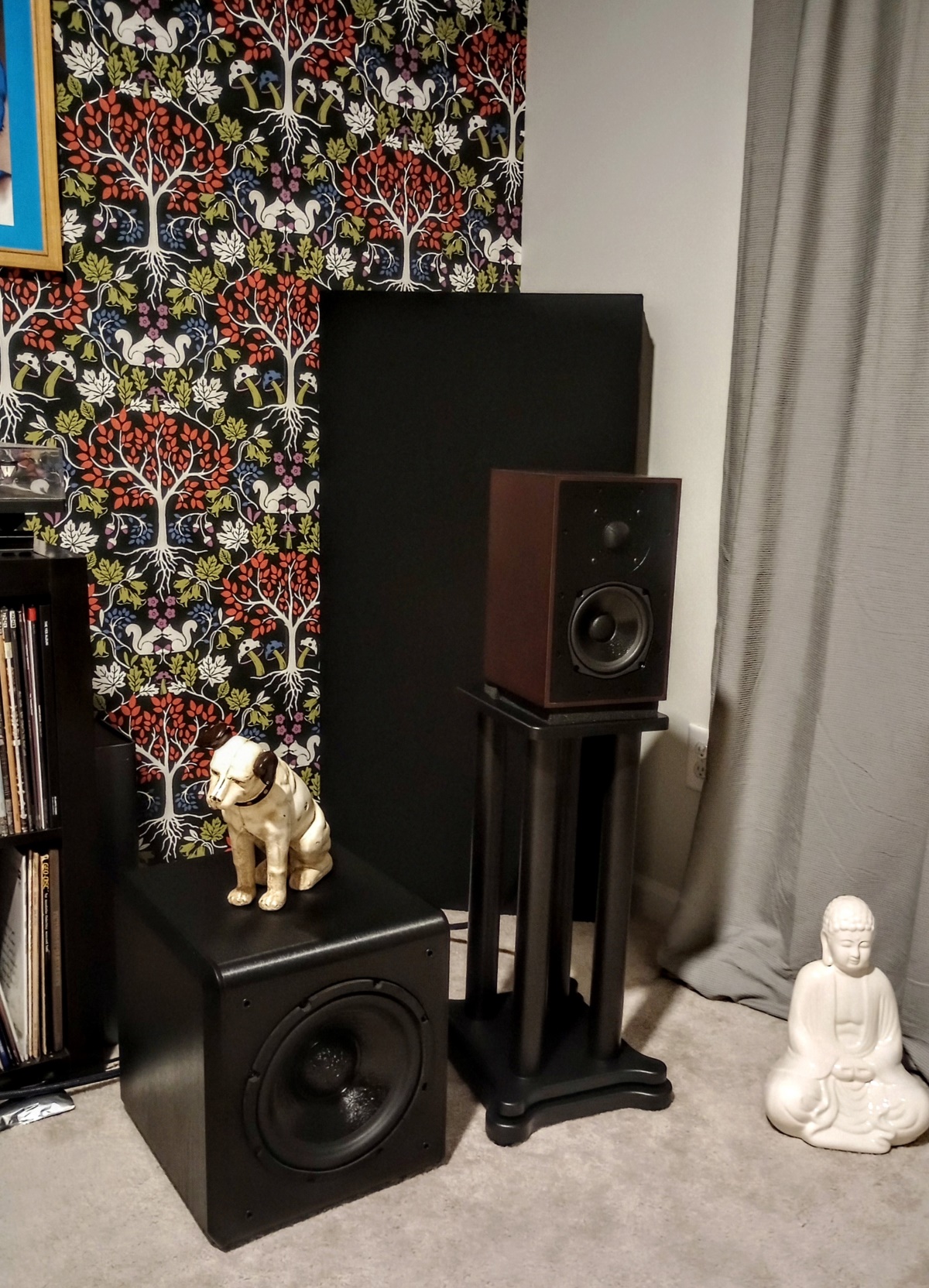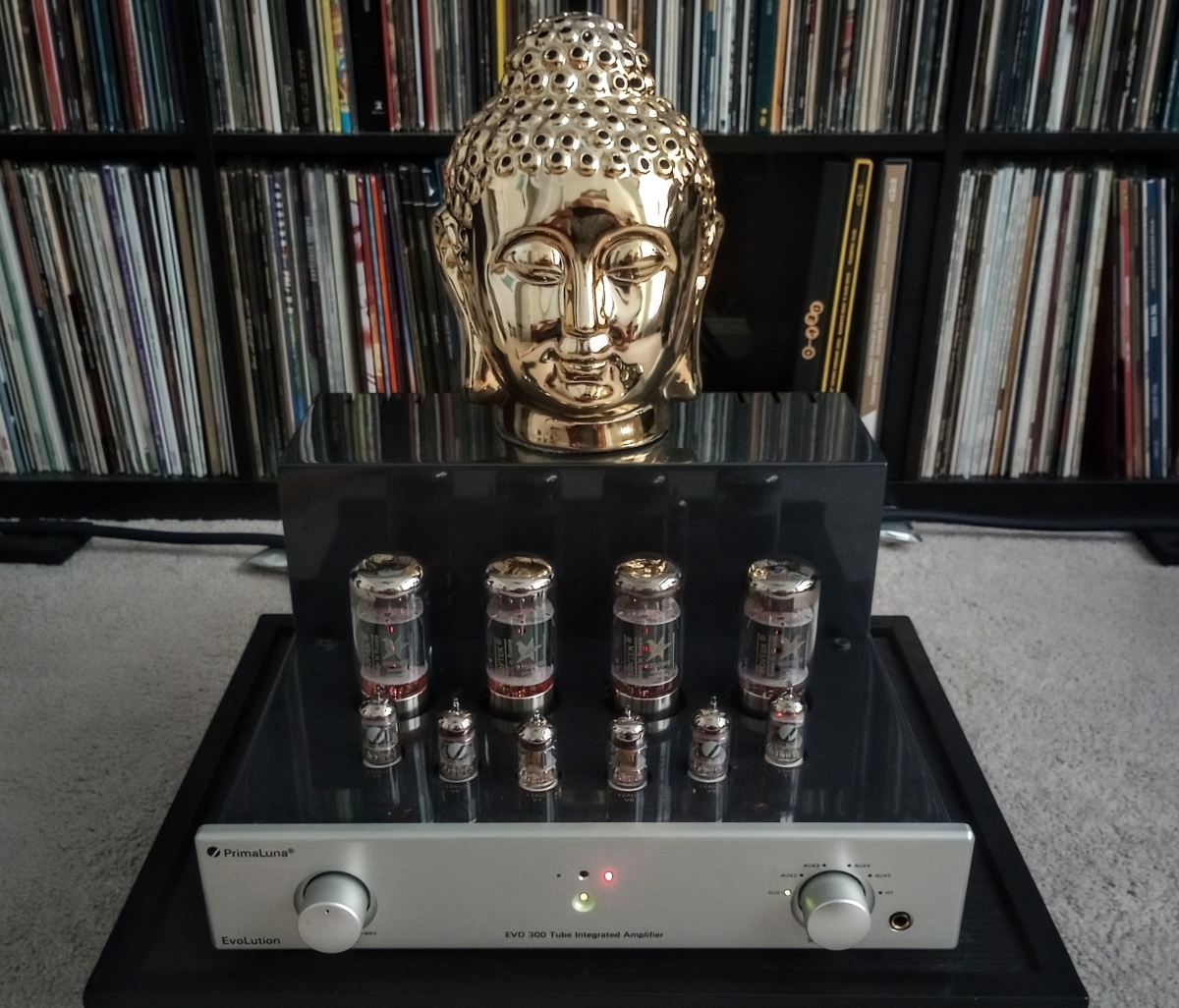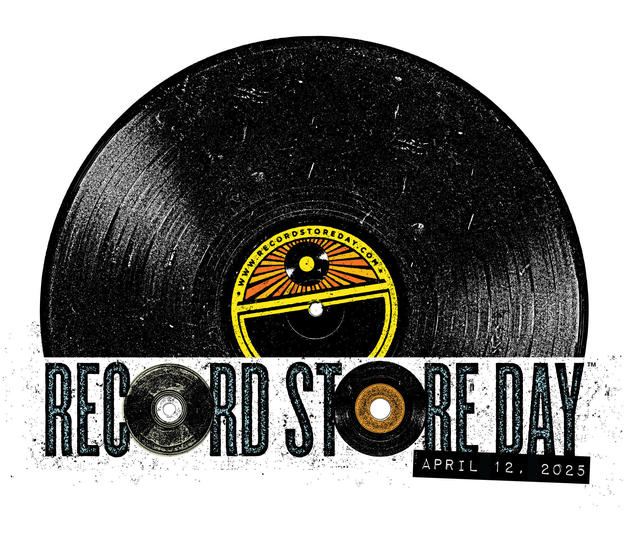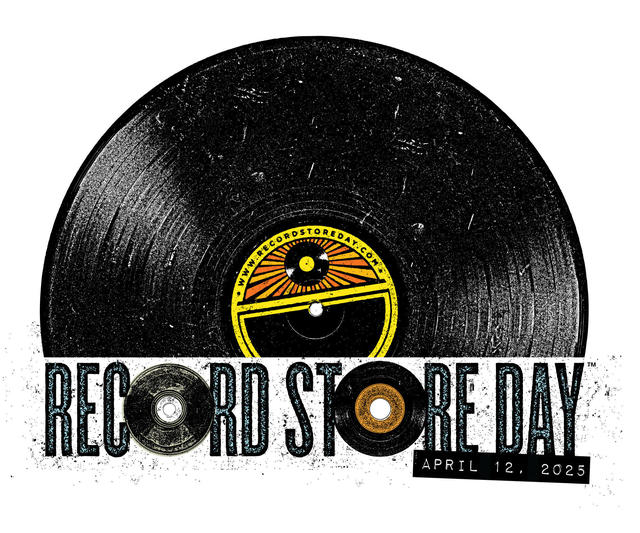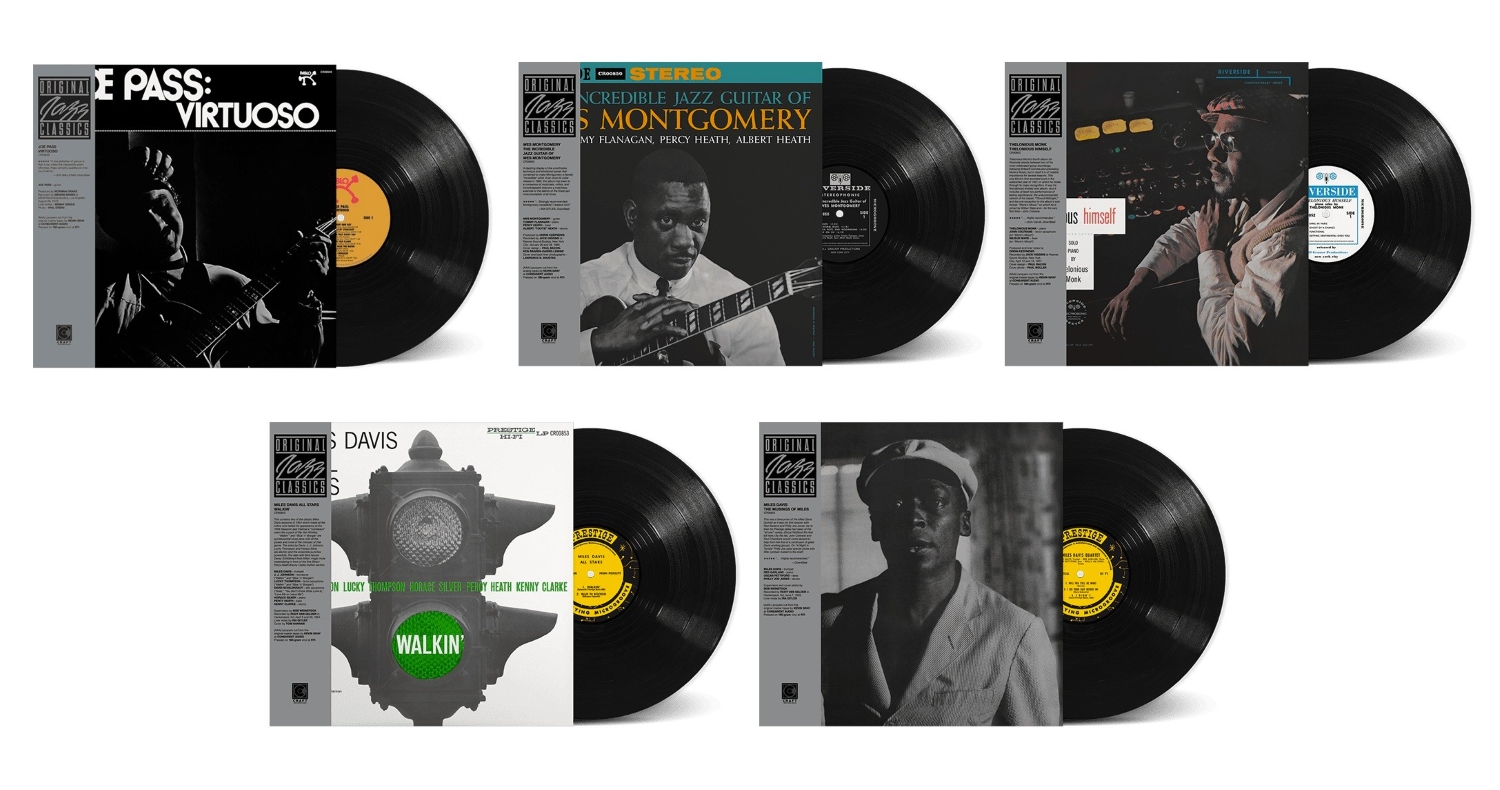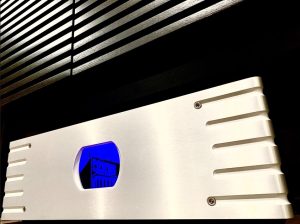When my review for Vera-Fi Audio's Main Stream™ went live a few weeks ago, Vera-Fi mainman Mark Schifter was only able to supply me with a single device for evaluation. Which according to Mark was at that point the only alpha unit presently in the field! I was really keen to first check out its performance in my all-analog system, which has suffered considerably from AC-related noise problems since my move to South Carolina. After reaching out to Mark to confirm the ideal location for Main Stream, I plugged it into the same AudioQuest Edison AC wall outlet where my AudioQuest Niagara 1200 power conditioner was connected. Sharing the same duplex outlet formed a parallel union between Main Stream and the Niagara 1200, and the setup was completed by pluggin Vera-Fi's SnubWay™ Noise Defender into the Niagara 1200's first AC outlet. The combination cleansed the AC line that provides power to all my analog equipment at a level beyond anything I might have thought possible, allowing the music to flow forth like never before! However, since that Edison AC outlet was located behind the large (and heavy!) record cabinet that most of my analog system equipment sits on, that pretty much made easily relocating the Main Stream into the digital room out of the question. That limited the scope of my original evaluation to the analog system; the digital system would have to wait until more Main Stream units became available, and now they are! Main Stream was a huge hit in the analog system; you can read my full review HERE.
What Exactly Is Main Stream?
For those who may have missed my evaluations of both SnubWay and Main Stream, I'll highlight the basics: along with SnubWay, the Main Stream Master Class Dynamic Parallel AC Line Conditioner is the second unit of a new pair of designed "from-the-ground-up" AC power conditioners developed by Vera-Fi Audio. Each device employs specialized filters that have been specifically tailored to address more troublesome aspects of AC mains noise, and Mark Schifter clearly didn't want to go with a "one size fits all" type device to accomplish his goals. SnubWay was designed by Viet Nguyen, and is an advanced parallel mains noise filter; its multiple discrete LRC filters are tuned to absorb AC mains noise in the 10kHz to 2MHz frequency range created by switch mode power supplies and other sources. However, its greatest range of effectiveness is in the problematic 400kHz-600kHz range, where most of the noise it's designed to eliminate resides. SnubWay is intended to be plugged into the first position of the power conditioner or power strip that provides current to your audio or A/V system.
Main Stream was designed by Peter Madnick, a brilliant designer in his own right, and Mark's former partner in Audio Alchemy from back in the 1980s. Main Stream's effectiveness is focused on the frequency range from 10kHz to 20kHz, but it's particularly potent in and around the critical 20kHz region, where hum, hiss, and hash tend to be most prominent. Main Stream directly takes aim at frequencies where so much of the other equipment in your home creates noise and pollutes the AC power stream—the same stream that also provides current to your audio and A/V systems. Main Stream is most effective when placed in a parallel configuration with the device that provides AC power to your equipment stack, whether it be a power conditioner or outlet strip. In other words, plug Main Stream into the same duplex outlet your conditioner or outlet strip is connected to.
Main Stream and SnubWay are individually focused on eliminating noise from specific, problematic frequency regions, but they've also been designed to overlap their coverage and to work in tandem to provide a complete solution for the elimination of AC mains noise. Mark is very proud of the work that's been done bringing both of these excellent new devices to the market, and while they provide impressive gains individually, they also offer a staggeringly good one-two punch when used in combination. Mark sent me additional Main Stream and SnubWay devices for evaluation in the digital system.
Setup and Listening Results
Clicking on my name in the header above will show the full complement of equipment that resides in both of my audio systems; as the first part of this review covered the all-analog room, this portion will cover Main Stream in the digital source system. The digital room includes a PS Audio Stellar Gain Cell preamplifier; it's connected to the Naiu Labs Ella power amplifier, which provides power to a pair of Magneplanar LRS loudspeakers playing in tandem with a pair of Vanguard Caldera 10 subwoofers. My current streamer/server/music player is now the single-box Euphony Summus; it's streaming the digital signal into a Topping E30 II digital to analog converter. The Yamaha BD-A1060 universal disc player was available for legacy disc playback, and power conditioning was courtesy of an AudioQuest Niagara 3000 Low Z Noise Dissipation System.
I still had a Puron AC unit plugged into one of the outlets of the Niagara 3000; following my process with Main Stream in the analog system, I removed it and took a listen to the digital system with no music playing. With the volume cranked and approaching the max, it matched my experiences when I first arrived here in the Low Country: the significant level of AC hash and grain that was present then was still obvious now. This observation may not empirically prove anything, but it's a good baseline starting point to understanding how Main Stream and SnubWay clear the noise from your AC mains when inserted into your system. To match the connection scheme of my original review in the analog system, I plugged Main Stream into one of the sockets of the AudioQuest Edison duplex power outlet in the digital room. It was plugged alongside the power cord that provides current to the Niagara 3000, to create the parallel relationship between them, with SnubWay plugged into the first outlet position of the Niagara. As in the analog room, I let the new pair burn in for a couple of days before proceeding.
Upon returning to the digital source system, the first thing I did was to remove SnubWay from the first outlet of the Niagara unit; I then listened to the noise spectrum with only Main Stream connected. It was significantly lower than I'd noted from a couple of days earlier, and reinserting SnubWay then completely eliminated any remaining hash from the AC line. Completely, as in zero AC line noise; compared to what I heard previously with only the benefit provided by the AudioQuest Niagara, this level of noise reduction is miraculous! While the problems I'd been facing in the analog system seemed much greater to me than anything I might be hearing from the digital system, until you've completely removed the digital system noise, you don't realize how pervasive it is, and how very much it colors your perception of the music you listen to with regularity.
I've been fortunate to have developed good relationships with a number of record labels, and have been reviewing an absolute metric ton of great reissue LPs recently from the likes of Impex Records, Rhino/Warner (especially the excellent Rhino High Fidelity Premium Series), and Craft Recordings (including their phenomenal Original Jazz Classics reboot). So much of my recent focus has been on the analog system, to the detriment of the digital source system, which hasn't gotten a lot of consistent action. Listening to that system almost exclusively for the last few days, with Main Stream and SnubWay in place, I'm absolutely awestruck by how much more analog the digital source system now sounds.
A DSD recording I regularly use for evaluations is Harry Connick Jr's We Are In Love (Columbia/Sony SACD rip), which features him in small combo and big band/orchestral settings. Two back-to-back album tracks were the focus, "A Nightingale Sang In Berkeley Square" and "Heavenly," which respectively feature his mellifluous vocals in small combo and with backup vocal accompaniment. The pair of tracks are absolute models of outstanding recording techniques, and I regularly use them for equipment evaluations, mostly because of their superb transparency of sound. "Nightingale" opens with Benjamin Jonah Wolfe's plucked acoustic bass intro to the left of the soundstage, then Harry Connick's perfectly centered vocal enters with astounding realism, followed by Marsalis' sax, softly blowing to the right. Marsalis' sax takes over at the song's bridge, and produces a solo that's presented with astonishing fidelity. The tune that follows, "Heavenly," opens with only Connick's voice, which is soon joined by a chorus of voices—many of them Connick's own voice multitracked—that simply float across the soundstage around and behind his voice in the forefront. Near the end of the track, a female voice emerges from the center of the soundstage and high above the others; she hits a lyrically sustained note that astonishes me every single time I hear it! It's a stunning effect, and makes for truly entertaining listening. And I've listened to these two tracks countless times on this system, but never with the level of mind-boggling clarity, imaging, and transparency as with Main Stream and SnubWay inserted into the system.
Another album I frequently resort to for evaluations is Native DSD Music's DSD 512 remaster of Patricia Barber's album Modern Cool (Impex Records, DSD 512 digital download), especially the songs "Silent Partner" and "Company." Both are essentially quartet settings that feature Barber's voice and piano, Michael Arnopol on acoustic bass, Mark Walker on drums and percussion, and Dave Douglas on trumpet. "Silent Partner" is a languid ballad with some nice piano work and an appropriately sultry vocal from Patricia Barber, along with some very nice brushwork from Walker and a perfect muted trumpet solo from Douglas. It sets the stage for "Company," which features some of the most incredibly dynamic interplay between the bass, drums, and trumpet on the entire album—or any album on my music server, for that matter! It's rapidly become my new acid test track for system bass response—it's an absolutely killer track, and Jim Anderson's recording captures the musicians with you-are-there realism. My overall impressions of the goodness of these two tracks has been enhanced exponentially by the presence of Main Stream and SnubWay in the system, which provide the necessary level of AC line quiet to allow these stellar tracks to really shine!
An album I've had in regular rotation in both the analog and digital rooms is The Pineapple Thief's It Leads To This (Kscope, 24/44.1 digital download); for those unfamiliar with the band, it's a mix of progressive rock and artful alternative rock. Lead singer, guitarist, and principle composer Bruce Soord's work is the focus of the band; he and drummer extraordinaire Gavin Harrison co-wrote the music for all the songs. Steve Kitch provides keyboards, and John Sykes adds bass and backing vocals. The two tracks that open the album, "Put It Right" and "Rubicon," are contrasting tunes that perfectly define the band's approach, with "Put It Right" more squarely in the alt-rock camp, and "Rubicon" championing the band's embrace of prog. "Put It Right" is a truly dynamic beginning to the album, with Soord's plaintive, almost spoken-word vocal accompanied by Kitch's smooth Fender Rhodes vamp. Harrison's pounding drums take the song into a steady, propulsive groove, which is underpinned by Sykes' impressive bass work, as Soord's searing guitar fretwork takes center stage. "Rubicon" is straight-up prog, not sounding terribly unlike late-period King Crimson, as the song blasts across the loudspeakers. I'd always felt that "Put It Right" sounded somewhat congested when playing through the digital system; with Main Stream and SnubWay in place, the increase in clarity and improved melodicism of the track is undeniably good compared to the sound before they joined the system.
I recently reviewed the 180 gram LP reissue of Duke Ellington's Ellington Indigos (Impex Records, 24/44.1 CD rip/180 LP); I liked the music so very much, I ordered a copy of Impex's 24K Gold CD for my digital music server. The entire album is a trip way back into the Fifties, with most of the tunes given more bluesy arrangements than one might typically expect, and the band's typically raucous soloists exhibit an unusual level of restraint in the performances. A couple of the tracks in particular really captivated me, Ellington's reworking of the classic Rodgers & Hart standard "Where or When," and the Jacques Prévert/Johnny Mercer/Joseph Kosma classic "Autumn Leaves"—I'm an absolute sucker for this tune, and Ozzie Bailey's vocal is drop-dead gorgeous! Prior to the installation of Main Stream and SnubWay, I felt the sound was a bit clouded during digital system playback. Hearing Ellington Indigos with the dynamic duo in place totally transformed the experience, elevating the digital tracks to a level very near that of the excellent 180 gram LP.
Final Impressions
As I mentioned in my review of Main Stream in the analog system, almost every reference in my evaluation here has been "Main Stream in combination with SnubWay." I've personally found the performance of the two units to be inseparable, because they work so very well in tandem with each other, achieving the complete elimination of noise from the connected system. Also quoting from that review: "my original SnubWay review found that unit to be indispensable, I now find the addition of Main Stream makes the combination of both units essential." The pair definitely works in partnership to create the best possible AC power environment for the enjoyment of music and/or video reproduction. The Puron AC units I'd previously had in place in each system performed admirably, but Main Stream and SnubWay are "next level" products that work in tandem to reduce a broader spectrum of AC noise, allowing your system to achieve ultimate performance.
Both Peter Madnick (Main Stream) and Viet Nguyen (SnubWay) are genius level designers, and their brains were obviously telepathically connected during the creation of these amazingly effective devices. Which have gifted my digital system with an impressive reduction of noise, allowing you to hear through more clearly to the music. With the significant reduction of AC-related noise and RF hash, and the accompanying drop in the overall noise floor, this system has never sounded so musically dynamic—or so very good. And every track benefits from more holographic imaging; once again, I'm totally impressed! Main Stream and SnubWay provide the kind of overall improvements you'd expect to pay through the nose for, but you get for essentially pennies on the dollar. Mark Schifter's motto with Vera-Fi Audio's products is "You get insane levels of performance at very sane price points." 'Nuff said!
Again, my heartfelt thanks to Mark Schifter for making it all possible, and to Peter Madnick and Viet Nguyen for the brilliance of their circuit designs. Main Stream and SnubWay are what I now call the dynamic duo, and are priced such that everyone can afford them and benefit from the improvements they'll bring to your system. Both devices come very highly recommended!
Main Stream Master Class Dynamic Parallel AC Line Conditioner
Retail: $299 MSRP, available for a limited-time introductory offer of $235
Vera-Fi Audio LLC
All photos courtesy of Vera-Fi Audio LLC and the author




